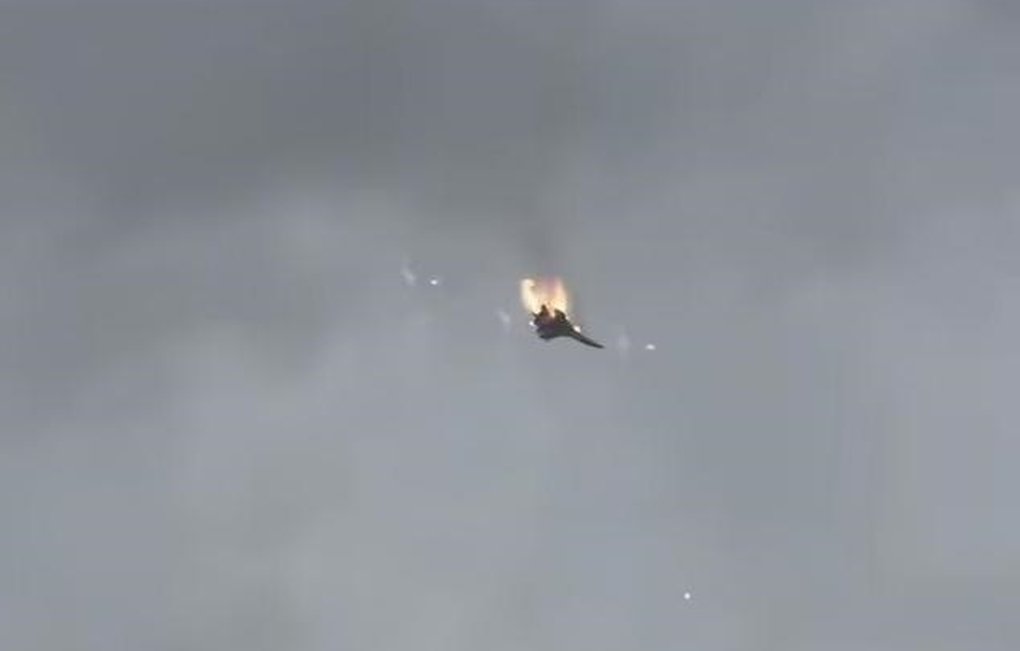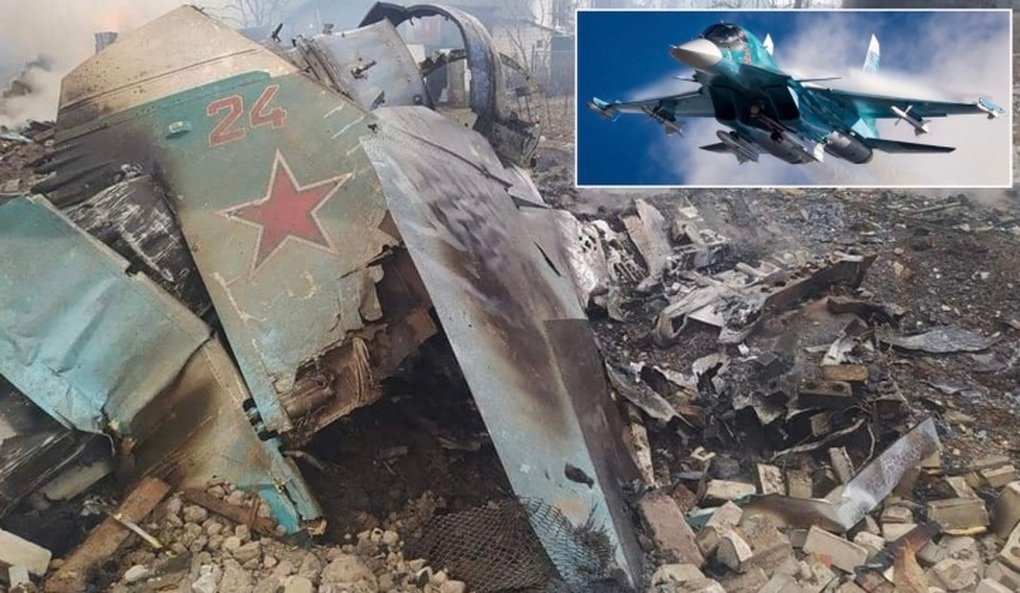(Dan Tri) – Russian anti-aircraft missiles once again showed their `strength`, and this time the target was their own Su-27, leading to a higher rate of misfires than Ukraine.
Russian Su-34 fighter was shot down (Illustration: Military Watch).
Russian air defense continuously makes the mistake of `our troops shoot our own troops`
Russian air defense continued a series of unhappy `achievements` when it downed another Su-27SM3 fighter plane of its own right over the Crimean peninsula on March 28.
Previously, another fighter aircraft, the Su-35, was also accidentally shot down by mistake.
The Su-27SM3 of the Russian Aerospace Forces (abbreviated as VKS) has been in service for 30 years. Compared to the Su-35 and Su-30SM, its air combat capabilities are quite outdated, while its
Therefore, the Su-27SM3s cannot continue to perform combat missions in Ukraine, but only perform the mission of intercepting Storm Shadow cruise missiles launched by Ukrainian Su-24M bombers into Crimea.
In recent times, the Russian Procuracy – primarily a tactical air force – continued to perform well on the battlefield, dropping thousands of guided glide bombs on targets in Ukraine and with very few of their fighters.
But something unexpected happened behind the scenes, when the Su-27SM3 fighter was destroyed by the Russian air defense forces.
Mayor of Sevastopol Razvozaev said: `A Russian Su-27 fighter plane crashed into the sea during an exercise off the coast of Sevastopol on the Crimean peninsula. The pilot on the plane promptly jumped out.`
Rescuers then reached the pilot 200 meters from the coast and took him to Sevastopol hospital.

Russian Air Force Su-27SM3 fighter was shot down in Crimea (Photo: telegram).
Once locked and exploded by an anti-aircraft missile near the aircraft, there is little chance of escape. The pilot may die in the cockpit, or the ejection seat mechanism will be damaged, making it impossible for the pilot to eject with a parachute, or
In the ongoing Russia-Ukraine conflict, the Russian military does not use MiG-29 fighters in combat.
Is there a problem with the Russian air defense’s enemy-us identification system?
Some experts say that the Ukrainian army’s continuous attacks with tactical ballistic missiles, cruise missiles and UAVs make Russian air defense forces `very sensitive`.
However, it seems that the Russian military’s enemy-friend identification system has many major problems, when communication between the air force and ground air defense continuously fails.
Worryingly, the Su-27, Su-35 fighter jets and the A-50U early warning aircraft were said to have been `accidentally hit` before, all in Russian airspace.
The Russian Procuracy can now be said to have suffered significant losses. The most advanced Su-34 or Su-35 fighter jets and A-50U early warning aircraft can still be shot down by Ukrainian air defenses.
The root cause is the participation of the Russian Procuracy in Syria, where the rebels have almost zero air defense forces. Such battlefield conditions may have caused the leadership of the Russian army as well as the Russian air force to develop a concern.
From this subjective mentality, they are not yet aware of the importance of improving long-range attack aviation weapons.
This outdated Russian bombing strategy caused a series of their fighter planes to be shot down by Ukrainian field defenses in the early stages of the conflict.
The crisis is said to have temporarily ended when Russia sent a series of conventional bombs equipped with the UMPK glider module, turning conventional bombs into guided bombs at low cost and in large quantities, thereby promptly
Regarding the direct cause, it is the Russian Air Force’s lack of tactics to suppress enemy air defenses and the coordination and coordination of air defense tactics in strategic positions.
Russia also seems to be lagging behind in technology to automatically identify enemies and enemies between air defense and air force because these systems are largely still developed during the Soviet period and improved by Russia, rather than modern systems.
The Russian military lags behind not only in military technology but also in military philosophy such as the use of guided glide bombs from conventional bombs, which the Americans have surpassed more than 20 years ago.
Or thinking about using UAVs on the battlefield, in the early stages of the war, they also lagged somewhat behind Ukraine.
However, up to now, Russian military leaders have not focused on using armed UAVs that integrate surveillance and combat, but they still rely mainly on the Lancet suicide UAV, but their range is too short.
If Russia does not have a suicide UAV of the Shahed-136 type, which is believed to have originated from Iran and improved into Geran-2, how can it consume Ukraine’s precious anti-aircraft missiles?
This emphasizes that the Russian military may not have taken advantage of lessons learned and not used many long-range precision guided missiles and suicide UAVs for raids, in order to protect effective ground combat forces.
The same goes for infantry, the Russian Army still persists in close combat, but has not boldly deployed the tactic of continuously attacking from far and near, using artillery fire, missiles, and precision guided bombs.
